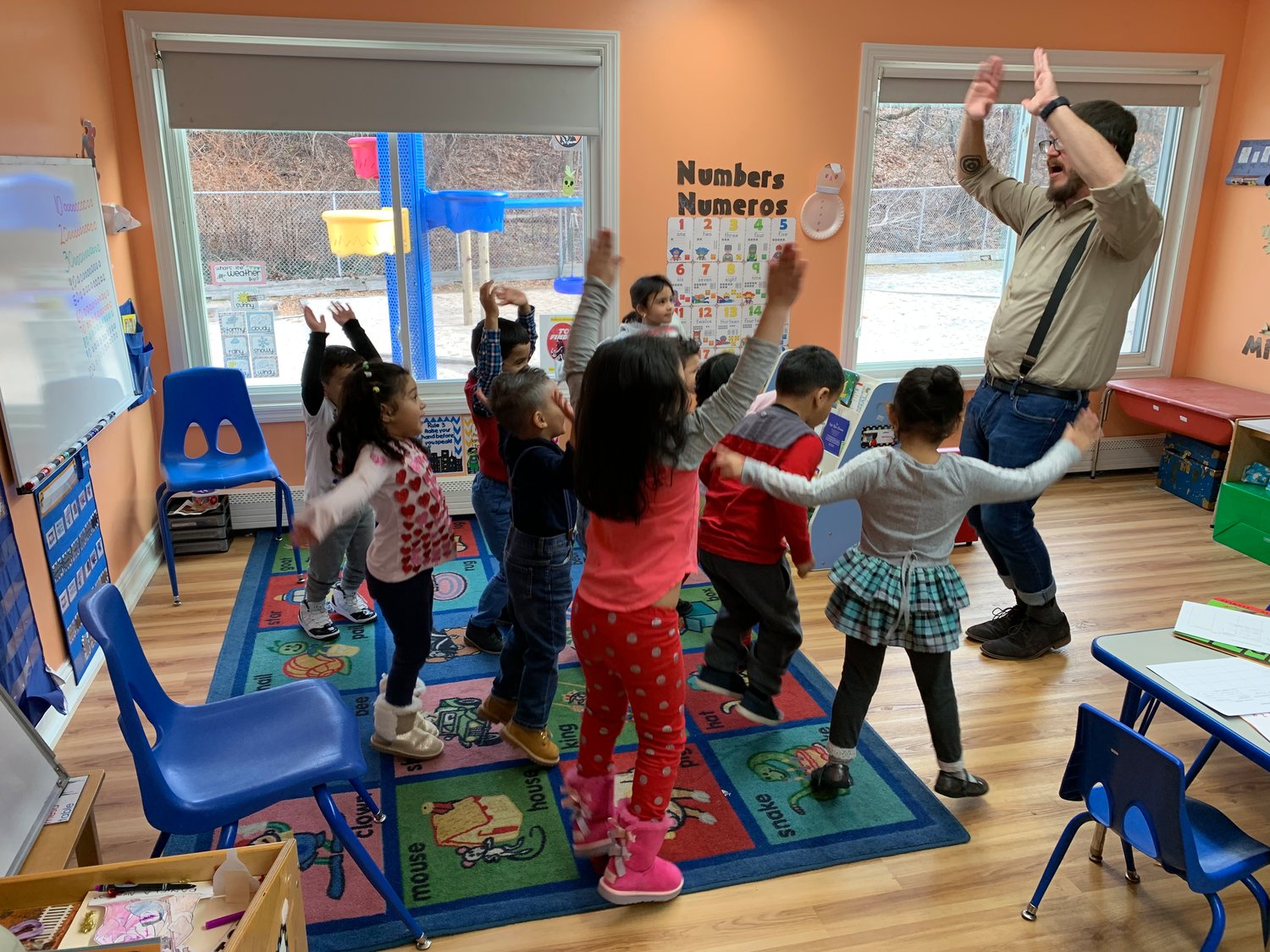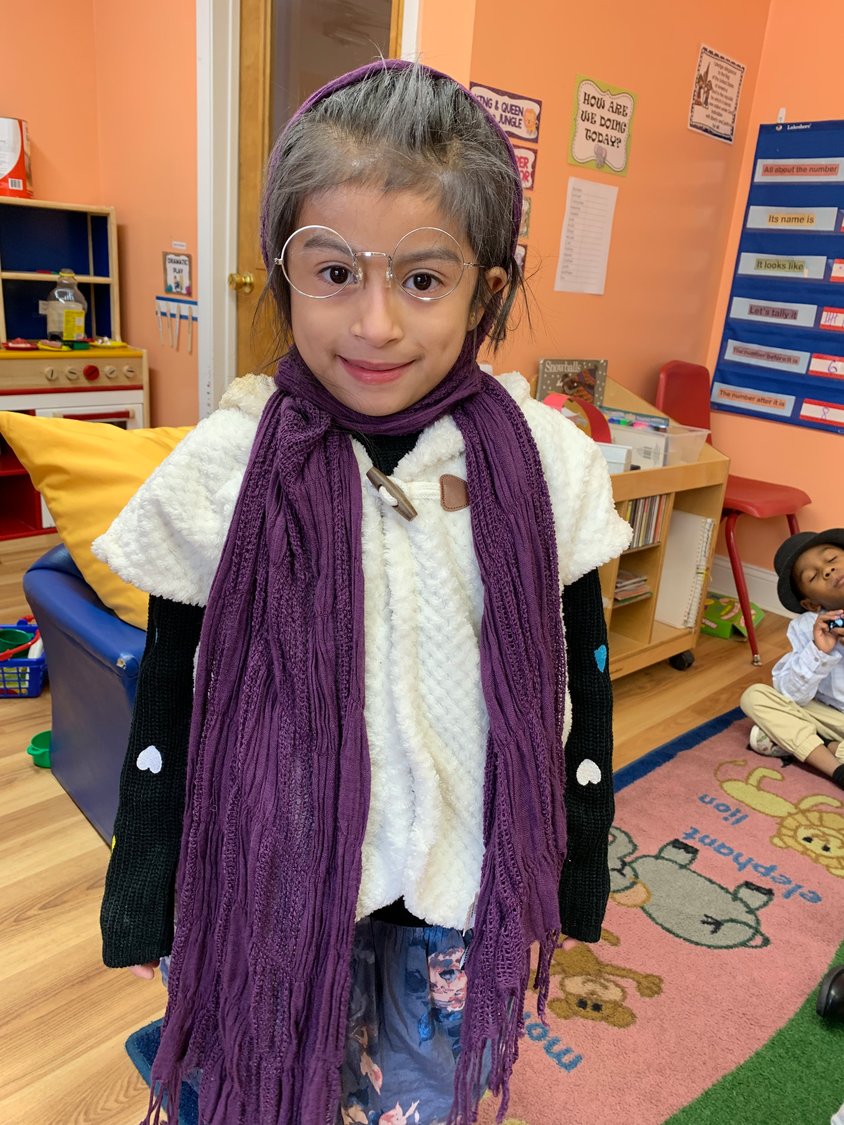Saturday, April 20, 2024
 48.0°,
Overcast
48.0°,
Overcast
Glen Cove tots celebrate the 100th Day of School
The Glen Cove Child Day Center was lively during its 100th Day of School celebration on Jan. 7, with the sound of children singing and dancing generating a contagious sense of jubilance.
Two hundred and twenty children go to the center, which offers a day care program for children from six weeks to two years old and a preschool called the Head Start Program, for children from 3 to 5 years old.
The children prepare for the celebration all year by keeping track of the days in anticipation of reaching 100 because when they do, there is traditionally a celebration at the center that includes fun activities, lessons and projects.
For this year’s celebration the preparations began at home, where students and their parents designed posters and props that represented their own unique take on the meaning of the 100th day of school. At the celebration, the fruits of their endeavors — shirts with 100 hearts and stars, a shoebox birthday cake with 100 candles, a makeshift pan the included 100 small beans — were shared with classmates.
During every week of school, classes selected a theme around which they based their creative curriculum, which helps the students learn through play and interactive lessons. For the 100th day of school, teachers and many of their students dressed up as elderly people, as if they were 100-years-old themselves. They wore large-framed glasses, suspenders and wool dresses, with some even dyeing their hair a shade of gray.
James Potter, the center’s child-development and health services manager, said that when the children dress up as seniors it is not only a fun quirk, but also a catalyst for a lesson. The students talk about what it means to be older, he said, why hair colors change and what they think will happen when they grow older. “It’s a lot about conversations with kids at this age,” Potter explained.
One of the key concentrations of center, he said, is to make learning as interactive and cooperative as possible. “It’s all through feedback loops and it’s all through talking to your teacher,” he said. “It’s not so much about sitting down and doing dittos and homework like a lot of people think. It’s having conversations with the kids and getting them to explain their answer to you.”
When planning for the 100th day of school, guidelines were set specifying the required lessons, such as science and math. However, teachers were granted a great deal of creative freedom when it came to how they taught their classes.
Teacher Dan O’Brien chose to guide his class through the significance of the number 100 through a physical activity that included 10 sets of 10 exercises. The students began by doing 10 stretches, moved on to 10 jumping jacks, then ran in place for 10 seconds. O’Brien ended each set with an explanation of how many exercises the children accomplished, all the way up to 100.
“I decided to make this just so they can learn the basic concept [that] every 10 goes up to 100, and they’ll learn that through moving 10 different ways,” O’Brien explained.
Speaking about what it means to be old can have a great deal of cultural significance Potter said. When the children talk about aging, their conversations often lead to further discussion focusing on their grandparents, their origins and what sorts of food they make. The center has many students from Hispanic backgrounds, with their families coming from a variety of countries. When the students share information about their families, they are not only talking about what it means to be older but are also teaching their classmates about different cultures.
“Culture plays a lot into what we do here,” Potter said.
Brenda Lopez, the center’s community outreach coordinator, said that this strong presence of Hispanic culture allows for each class to be considered bilingual. Many students live in households where the predominant language is Spanish. Being in a classroom where the lesson is taught in both English and Spanish benefits them. When Spanish is spoken they understand their lessons more readily. And when the same lesson is spoken in English they learn new words.
And Lopez said, she believes that many non-Spanish speaking parents appreciate the bilingual culture of the school because their children are able to learn Spanish.
HELP SUPPORT LOCAL JOURNALISM
The worldwide pandemic has threatened many of the businesses you rely on every day, but don’t let it take away your source for local news. Now more than ever, we need your help to ensure nothing but the best in hyperlocal community journalism comes straight to you. Consider supporting the Herald with a small donation. It can be a one-time, or a monthly contribution, to help ensure we’re here through this crisis. To donate or for more information, click here.
Sponsored content
Other items that may interest you









